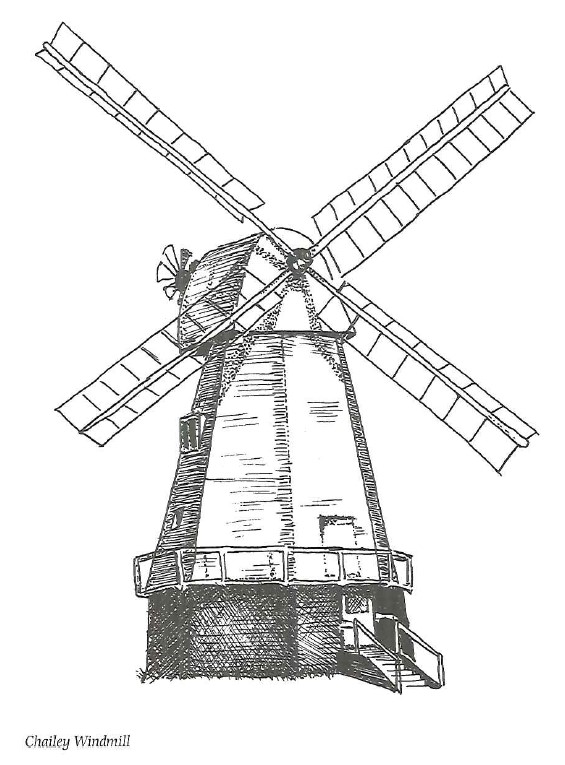A formidable lady believed to be more than 300 years old is still going strong today. She used to reside at Wannock’s ancient watermill, powered by one of several streams rising in the chalk hills above the village, but since the mill’s demolition has moved to more suburban surroundings.
The lady in question is a wooden carving, which used to stand at the front of the building. In his book The Road and the Inn, written in 1917, Hissey gave an account of his meeting with the strange likeness: ‘My attention was arrested by a badly carved and brightly coloured figure of a woman … shown holding a bowl grasped in one hand, and in the other an upraised long rolling pin.’ He was told by the miller that the figure was thought to be 300 years old and depicted an earlier miller’s wife.
And the bowl and rolling pin? When the gleaners brought their corn she took a “toll’ of a gallon bowl of grain, levelling it off with the pin, and ground the rest free of charge.
A few years ago the figure disappeared, but was spotted in a Brighton antiques shop and bought by the Turner family of Polegate who kept it in safe keeping – fitting custodians as the family used to run the Mill House Bakery in Wannock.
In 1827 James Seymour became tenant miller and farmer. His two sons Joseph and Stephen moved into a more lucrative field of business with the local smuggling fraternity. Joseph would make two or three trips to France each year to arrange the purchase of contraband which was then carried over in French boats and landed at Birling Gap and Cow Gap, and from there to secure hiding places. There are still secret passages at Wannock Place and the Old Mill House.
Joseph ploughed his proceeds from this profitable sideline into more legitimate activities, building a windmill at Polegate, a new watermill at Wannock and establishing the extensive strawberry field in the village’s Walnut Street. It was Joseph’s great-grandson Charles Thomas who branched out from strawberry cultivation in 1895 to open ‘Charlie’s Tea Gardens’. There was local bread, a strawberry tea of course, and a special little loaf was provided for each child who paid a visit. The venture flourished until the outbreak of the Second World War.
The area was a base for airships during the First World War, patrolling the coastal waters for U-boats and also carrying out ‘spotting’ work for the artillery in France. There was a tragedy just before Christmas in 1917 when one of the airships lost its way in fog and darkness. It landed on the Aldis lamp of another airship moored on the Downs, the envelope split and the exhaust ignited the escaping hydrogen. The pilot died in the flames and two crew members were badly burned. The moored airship also caught fire and Lieutenant Victor Watson bravely rushed into the inferno to make sure all the crew had escaped.
He lost his right arm when two 65lb bombs on board exploded. Iron mooring rings, set in concrete on the hills, are the only relic today of the base.
